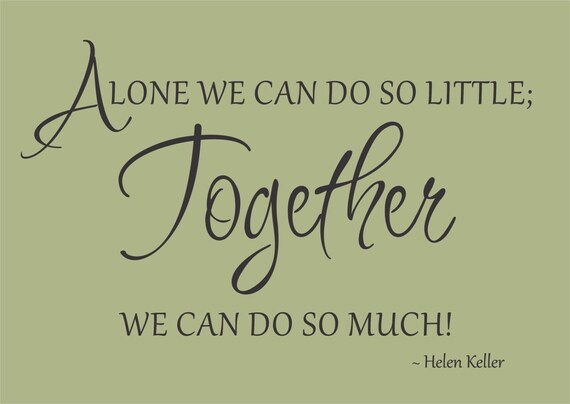As a parent, I am amazed at how much my own children have grown and changed in the past three and a half years. Their lives are just beginning, too, in a different sense. Their personalities are still forming, their understanding of the world is vastly and rapidly expanding with each day, and they are actually taking first steps and experiencing milestones at every turn.
Seven months ago, Jordan decided to make his presence known. Reflecting with several of my students who were in the senior speech class that sent me off to the hospital, we were all in such disbelief over how fast those months passed and how quickly the school calendar disappeared.
As a seasoned teacher, I can walk into a class, navigate the unexpected, and feel confident in the curriculum that I have created. While I am always adapting, rereading, relearning, and adjusting, it is a relief to have confidence in the classroom even when my mind is preoccupied. This year, life has taught me, however, that no matter how comfortable I feel, I will still be tested and challenged in new and unexpected ways.
 For a majority of this school year, I have not felt like myself. I have struggled emotionally and at home, which has left me drained and some days heartbroken. While I believe I have done an okay job continuing with my daily tasks, my heart was heavy, and my mind often raced to the worst case scenario for Jordan and our family. Luckily, and perhaps unluckily, my nervous and anxious energy defaults into a smile and a need to accomplish tasks. My frenetic energy is calmed by moving, doing, reading, and grading. I am an optimist at my core, but there have been times this year that completing even the most mundane and routine daily activities were a struggle - especially during the winter months when Jordan's diagnosis was still fresh. As time has passed, these feelings of heaviness have been slowly lifted as new understanding and knowledge has allowed me to quell my fears.
For a majority of this school year, I have not felt like myself. I have struggled emotionally and at home, which has left me drained and some days heartbroken. While I believe I have done an okay job continuing with my daily tasks, my heart was heavy, and my mind often raced to the worst case scenario for Jordan and our family. Luckily, and perhaps unluckily, my nervous and anxious energy defaults into a smile and a need to accomplish tasks. My frenetic energy is calmed by moving, doing, reading, and grading. I am an optimist at my core, but there have been times this year that completing even the most mundane and routine daily activities were a struggle - especially during the winter months when Jordan's diagnosis was still fresh. As time has passed, these feelings of heaviness have been slowly lifted as new understanding and knowledge has allowed me to quell my fears.
Josh and I do not believe God chooses for His people to suffer or struggle. Those aspects of our world exist because our world is fallible; suffering is inevitable because we live in an imperfect world. Our faith, however, reminds us that no matter what path is placed before us, we can choose to be joyful. We can elect to navigate the rockiest of roads in ways that lead to fulfillment and meaning. On occasion, we have to force ourselves to choose happiness while other days, the days where giggles and art projects fill the house, the navigation of life's path seems a lot easier. Those carefree days are the days that make life so sweet and will make those tougher days less bleak.
About a week ago, Jordan had his monthly C.F. doctor appointment, which will now be every two months because he is doing so well, and our doctor celebrated and congratulated us for keeping Jordan happy and healthy (and strong enough to rip the paper off the doctor’s table). As a parent, keeping an infant happy and healthy is a victory no matter the circumstances. What we have come to realize about C.F. is that while he will experience complications that can be life-threatening, he will also live a more normal life than we ever expected. Yes, this disease is chronic, serious, and awful, but many other things in this world can be described in that manner. It has been a difficult journey to accept that C.F. is a part of our lives, but I have made peace with this diagnosis. All three of my children are beautifully made, loved, and will serve a purpose in this world. This is what my faith has taught me to believe.
We will inevitably occupy hospital rooms and attend many doctor appointments in my household, but we are committed to laughing through those experiences. Will there come a day when the road gets rocky? Of course. Those days will come for us all. Will I still worry, cry, and experience anxiety? Of course, I'm a mom, but I will not allow these emotions to consume me.
This year, I have truly been schooled by life. I now more than ever understand that life is unpredictable. Each unexpected experience can grow and shape us into better people, and while that growing process is not without pain, there is beauty in imperfection. I have also learned that empathy is a life-giving tool. Not only do we as educators need to show empathy to our students and to each other, but we also need to learn to accept empathy from others. Walking with others, showing vulnerability, and embracing our emotions, even when we feel like they expose our weaknesses, are key to growing together. This year, I have had my grit and resilience skills sharpened. I have been challenged in more ways than one to be a better educator, mother, and person; and while I am glad to be closing the door on the 2017-18 school year, I am grateful for what this year has asked me to face.
As commencement celebrations continue to appear and fill our social media feeds and calendars, I am overjoyed with the milestones and successes that I witness my students current and past experience. I am proud of the young men and women they are becoming. As their parents must feel for them, I feel for my own children - hopeful, in awe of what has already passed, and excited about a future of possibilities.
Each milestone is a blessing. With the closure of one chapter, a new one remains unwritten.
Seven months ago, Jordan decided to make his presence known. Reflecting with several of my students who were in the senior speech class that sent me off to the hospital, we were all in such disbelief over how fast those months passed and how quickly the school calendar disappeared.
As a seasoned teacher, I can walk into a class, navigate the unexpected, and feel confident in the curriculum that I have created. While I am always adapting, rereading, relearning, and adjusting, it is a relief to have confidence in the classroom even when my mind is preoccupied. This year, life has taught me, however, that no matter how comfortable I feel, I will still be tested and challenged in new and unexpected ways.
 For a majority of this school year, I have not felt like myself. I have struggled emotionally and at home, which has left me drained and some days heartbroken. While I believe I have done an okay job continuing with my daily tasks, my heart was heavy, and my mind often raced to the worst case scenario for Jordan and our family. Luckily, and perhaps unluckily, my nervous and anxious energy defaults into a smile and a need to accomplish tasks. My frenetic energy is calmed by moving, doing, reading, and grading. I am an optimist at my core, but there have been times this year that completing even the most mundane and routine daily activities were a struggle - especially during the winter months when Jordan's diagnosis was still fresh. As time has passed, these feelings of heaviness have been slowly lifted as new understanding and knowledge has allowed me to quell my fears.
For a majority of this school year, I have not felt like myself. I have struggled emotionally and at home, which has left me drained and some days heartbroken. While I believe I have done an okay job continuing with my daily tasks, my heart was heavy, and my mind often raced to the worst case scenario for Jordan and our family. Luckily, and perhaps unluckily, my nervous and anxious energy defaults into a smile and a need to accomplish tasks. My frenetic energy is calmed by moving, doing, reading, and grading. I am an optimist at my core, but there have been times this year that completing even the most mundane and routine daily activities were a struggle - especially during the winter months when Jordan's diagnosis was still fresh. As time has passed, these feelings of heaviness have been slowly lifted as new understanding and knowledge has allowed me to quell my fears. Josh and I do not believe God chooses for His people to suffer or struggle. Those aspects of our world exist because our world is fallible; suffering is inevitable because we live in an imperfect world. Our faith, however, reminds us that no matter what path is placed before us, we can choose to be joyful. We can elect to navigate the rockiest of roads in ways that lead to fulfillment and meaning. On occasion, we have to force ourselves to choose happiness while other days, the days where giggles and art projects fill the house, the navigation of life's path seems a lot easier. Those carefree days are the days that make life so sweet and will make those tougher days less bleak.
 |
Jordan at his seven month CF checkup
The TERROR (and Tearer) of Doctors' Paper
|
We will inevitably occupy hospital rooms and attend many doctor appointments in my household, but we are committed to laughing through those experiences. Will there come a day when the road gets rocky? Of course. Those days will come for us all. Will I still worry, cry, and experience anxiety? Of course, I'm a mom, but I will not allow these emotions to consume me.
This year, I have truly been schooled by life. I now more than ever understand that life is unpredictable. Each unexpected experience can grow and shape us into better people, and while that growing process is not without pain, there is beauty in imperfection. I have also learned that empathy is a life-giving tool. Not only do we as educators need to show empathy to our students and to each other, but we also need to learn to accept empathy from others. Walking with others, showing vulnerability, and embracing our emotions, even when we feel like they expose our weaknesses, are key to growing together. This year, I have had my grit and resilience skills sharpened. I have been challenged in more ways than one to be a better educator, mother, and person; and while I am glad to be closing the door on the 2017-18 school year, I am grateful for what this year has asked me to face.
As commencement celebrations continue to appear and fill our social media feeds and calendars, I am overjoyed with the milestones and successes that I witness my students current and past experience. I am proud of the young men and women they are becoming. As their parents must feel for them, I feel for my own children - hopeful, in awe of what has already passed, and excited about a future of possibilities.
Each milestone is a blessing. With the closure of one chapter, a new one remains unwritten.





























